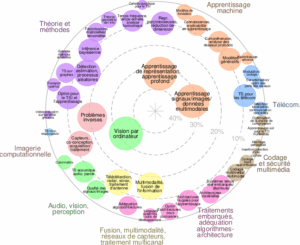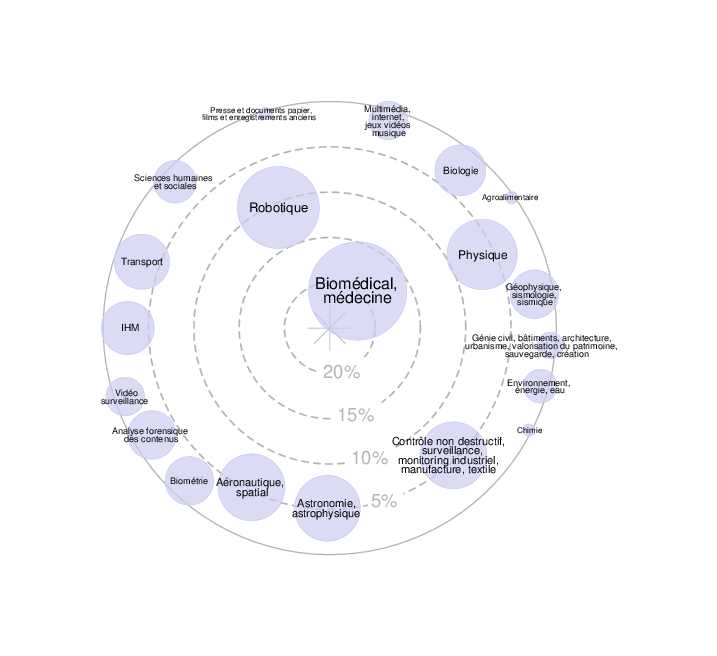Keywords: Medical Image Analysis, Statistical Shape Model, Mesh Correspondence, Artificial Intelligence, Multi-Object (tibia, muscle, skin)
Born from the complementarity between the field of health and communication sciences, the LaTIM is a research lab which leads multidisciplinary research driven by scientists, engineers, and physicians from the University of Brest, IMT Atlantique, INSERM and the University Hospital of Brest. Medical information is at the heart of our research projects; being by nature multimodal, complex, heterogeneous, shared and distributed, it is integrated into methodological solutions and transferred into the clinical community with the sole aim of improving the medical benefit.
Interested to be involved in a research project combining computer vision and medicine?
Context
This M2 internship at LaTIM (Brest) focuses on statistical shape models for the knee. Your mission: make smart knee implants safer and more reliable—by shaping better 3D knees.
Why this matters:
Knee implants (total knee replacements) relieve pain and restore function when severe osteoarthritis or injury makes daily life hard. They’re among the most common orthopedic surgeries—hundreds of thousands each year in Europe, millions worldwide. PiezoKnee (ANR) aims to build smart implants that track how the knee is loaded and flag early issues (loosening, infection), so clinicians can act sooner and extend implant lifespan. The key technical challenge is safe, reliable power and data transmission through tissue. Designing and validating solutions requires realistic 3D knee models—bone (tibia), surrounding soft tissue (muscles), and skin—capturing natural anatomical variability so the implant works across the population.
The core idea—SSMs, in plain terms:
A Statistical Shape Model (SSM) is a compact, probabilistic model learned from aligned, point-to-point corresponded meshes. It summarizes the average anatomy and the main modes of variation. Trained on tibia, muscle, and skin, an SSM can interpolate or sample new, anatomically plausible legs reflecting population diversity—enabling large representative cohorts without acquiring and segmenting new data.
Why correspondence matters: the quality of an SSM hinges on mesh correspondence—establishing consistent point-to-point mappings across training shapes. Different strategies (geometry/optimization, atlas/prior-based, learning-based, hybrids) can affect model realism and may introduce inter-object collisions (e.g., muscle intersecting bone), which we must detect and avoid.
What you’ll do :
- State of the art: Review SSMs for musculoskeletal anatomy and modern mesh correspondence methods suitable for multi-object models (tibia ⊂ muscle ⊂ skin). Define clear, practical evaluation criteria.
- Correspondence & modeling: Implement and benchmark multiple correspondence algorithms to obtain anatomically meaningful point-to-point mappings. Build SSMs per method and per object (single and multi-object). Track intrinsic SSM metrics: compactness, generality, specificity.
- Evaluation & recommendations: Quantitatively compare pipelines using the metrics above plus multi-object collision/consistency checks (triangle–triangle intersection tests, signed-distance violations, intersection volumes/areas). Deliver best-practice guidance for generating collision-free, simulation-ready multi-object SSMs.
Integration in the PiezoKnee Pipeline:
Using the SSM, we will produce standardized, collision-free multi-object meshes with consistent correspondences. These become the common input geometry for:
– Implant sizing & positioning studies
– Physical and virtual phantoms
– Acoustic and finite-element simulations of wireless power transfer and mechanical behavior.
A robust SSM is thus essential to deliver reliable, repeatable shape data to the rest of PiezoKnee project.
In this internship, you’ll work at the intersection of AI, 3D geometry, and healthcare—turning complex anatomy into clean, usable models meant to help make implants safer and longer-lasting.
Deliverables:
Reproducible code, benchmark datasets/splits, metric dashboards, and a report with method comparison.
Profile
- 5th-year student in Computer Science, Computer Vision or related discipline.
- C++/Python programming skills and experience with 3D modelling and Image processing.
- Ability to deliver documented code and present results to the team.
- Ability to read scientific articles and extract relevant information.
Conditions
Start date: February / March2025
Duration: 6 months, indemnities
Localization: LATIM – University Hospital of Brest – 2, avenue Foch – 29200 BREST – France
Supervisors: Paul-Emmanuel EDELINE (IMT Atlantique), Guillaume DARDENNE (INSERM)
Applications to be sent to: paul-emmanuel.edeline@imt-atlantique.fr, guillaume.dardenne@inserm.fr





